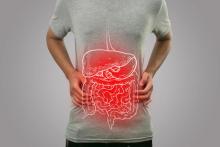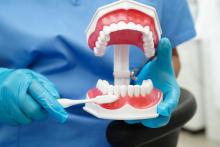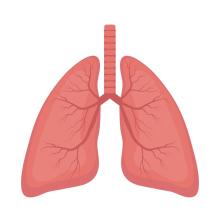חדשות המחקר

Raneen Abu Shqara, Maya Frank Wolf, Jawad Karram, Inshirah Sgayer, Ala Aiob, Lior Lowenstein, Susana Mustafa Mikhae: A Multidisciplinary Approach for Treating Women with Pelvic Organ Prolapse in Pregnancy: A Series of Eight Women (Isr Med Assoc J . )
Pelvic organ prolapse in pregnancy is rare. Consequent complications include cervical infection, spontaneous abortion, and premature birth. Conservative management by means of a pessary have been described as improving maternal symptomatology and minimizing gestational risk. The delivery mode is controversial. Objectives: To describe the clinical courses of patients diagnosed with pelvic organ prolapse during pregnancy, and to present our multidisciplinary approach.

Moaad Farraj, Igor Waksman, Tatyana Arzumanov, Anna Vakarev, Hisham Hussein, Zakhar Bramnick, Ron Dar: Visceral Block in Bariatric Surgery: A Pilot Double Blind Randomized Clinical Study (Isr Med Assoc J .)
Local anesthetics are used in various sites and mechanisms to maximize perioperative analgesia and reduce opioid use and side effects. Pain management in the bariatric setting is challenging and the efficacy of local anesthetics intraoperatively is under current evaluation.

Helana Jeries, Rula Daood, Basem Hijazi, Mohammad E Naffaa, Fadi Hassan: Drug Survival on First Biologic Therapy Among Late-Onset Rheumatoid Arthritis Patients Compared to Early-Onset Patients: A Population-Based Cohort Study (Musculoskeletal Care . )
Rheumatoid arthritis (RA) patients can be divided according to the age of disease onset and classified as late-onset RA ≥ 60 years old or early-onset RA < 60 years old. Current treatment guidelines do not stipulate any preference regarding the biologic that should be used first in the late-onset group. This study aims to compare the drug survival times on first biological treatment between late and early-onset RA patients.

Noa Caspi-Avissar, Sagi Gleitman, Edo Y Birati, Erez Kachel: Depression predicts delayed return to daily activities in patients post-cardiac surgery: a prospective observational study (J Cardiothorac Surg .)
Depression significantly impacts recovery and return to daily activities in cardiac surgery patients. Assessing and managing depressive symptoms before and after surgery are crucial for improving surgical outcomes and timely return to daily activities, including work. The objectives of this study were to examine differences in patients' depression levels in relation to their return to daily activities in the early post-cardiac surgery period, and to assess predictors of delayed return to daily activities.

Development of the International Federation for Surgery of Obesity and Metabolic Disorders-European Chapter (IFSO-EC) Grade-Based Guidelines on the Surgical Treatment of Obesity Using Multimodal Strategies: Design and Methodological Aspects (J Clin Med)
The prevalence of obesity is already a worldwide health concern. The development of straightforward guidelines regarding the whole available armamentarium (i.e., medical, endoscopic, and surgical interventions in conjunction with a guidance program) is paramount to offering the best multimodal approach to patients with obesity.
(Nasser Sakran)

Inshirah Sgayer, Saaed Awwad, Ala Aiob, Susana Mustafa Mikhail, Lior Lowenstein, Marwan Odeh: Pre-Delivery BMI and the Accuracy of Foetal Weight Estimation in Very Preterm Infants (J Obstet Gynaecol Can .)
Examines the relation between maternal pre-delivery body mass index (BMI) and the accuracy of sonographic estimated foetal weight (EFW) in very preterm infants (<32 weeks gestation).

Maternal-Fetal Transfer of Anti-SARS-CoV-2 Antibodies in Amniotic Fluid: Insights from Maternal Vaccination and COVID-19 Infection (J Clin Med)
As the COVID-19 pandemic wanes, understanding maternal-fetal antibody transfer remains crucial for optimizing vaccination strategies. This study evaluates anti-SARS-CoV-2 antibody levels in amniotic fluid following maternal BNT162b2 mRNA vaccination and/or COVID-19 infection during early pregnancy, focusing on the first and second trimesters.
(Inshirah Sgayer, Marwan Odeh, Meital Gal-Tanamy, Mona Shehadeh, Hagai Rechnitzer, Yousef Haddad, Rudi Hamoudi, Nisreen Kinaani Mousa, Vivian Abu Uksa Dakwar, Maya Frank Wolf, Tzipora C Falik Zaccai, Lior Lowenstein)

Einav Schlesinger, Keren Hatiel, Neomi Hod, Eric S Shinwell: Longer skin-to-skin contact after birth enhances breastfeeding quality and duration: A cohort study (Acta Paediatr .)
Skin-to-skin contact (SSC) immediately after birth may improve breastfeeding outcomes. This study explored the effect of the duration of SSC in the delivery room on breastfeeding quality and duration.

Golan Nadav, Marwan Odeh, Aviv Mesika, Yael Abarbanel Har-Tal, Moshe Goldfeld, Tania Zalatkin, Alejandro Livoff, Raghad Jeris Khoury, Inshirah Sgayer, Limor Kalfon, Tzipora C Falik-Zaccai: Novel fetal phenotype of TAF8 deficiency (Eur J Hum Genet . )
TAF8 is part of the transcription factor TFIID complex. TFIID is crucial for recruiting the transcription factor complex containing RNA polymerase II. TAF8 deficiency was recently reported as causing a severe neurodevelopmental disorder in eight patients. We have ascertained three Muslim Arab couples with fetal brain malformations. Clinical, imaging, pathological, biochemical, and molecular analyses were performed.

Shareef Araidy, Imad Abu Ei-Naaj: The Relationship between Oral and Maxillofacial Surgeon Experience and Dental Implant Angulation Accuracy (Ann Ital Chir .)
Dental implant placement requires precise angulation for long-term success and optimal restoration function. Therefore, this study explores the potential association between the experience of oral and maxillofacial surgeons and the accuracy of implant angulation, including its relationship to neighboring teeth and other implants.

Yulia Petriuk: Conversion of sleeve gastrectomy to Roux-en-Y laparoscopic gastric bypass: a comprehensive 14-year follow-up study on efficacy and outcomes (Surg Obes Relat Dis .)
Failed sleeve gastrectomy (SG), defined by inadequate weight loss or weight regain and by reflux and structural complications, can be treated by a laparoscopic conversion to Roux-en-Y gastric bypass (RYGB). Objectives: To examine the efficacy and outcomes of conversion surgery over a 14-year follow-up period.

Omry Koren: Microbiota during pregnancy and early life: role in maternal-neonatal outcomes based on human evidence (Gut Microbes . )
Here, we explored the vast potential of microbiome-based interventions in preventing and managing non-communicable diseases including obesity, diabetes, allergies, celiac disease, inflammatory bowel diseases, malnutrition, and cardiovascular diseases across different life stages. We discuss the intricate relationship between microbiome and non-communicable diseases, emphasizing on the "window of opportunity" for microbe-host interactions during the first years after birth.

Rola Khamisy-Farah, Eden Biras, Rabie Shehadeh, Ruba Tuma, Raymond Farah: Bridging the Gap: A Mixed-Method Study on Gender and Sexuality Awareness in Medical Education and Practice (JMIR Med Educ .)
The integration of gender and sexuality awareness in healthcare is increasingly recognized as vital for patient outcomes. Despite this, there is a notable lack of comprehensive data on the current state of physicians' training and perceptions in these areas, leading to a gap in targeted educational interventions and optimal healthcare delivery.

Alon Gorenshtein: Pretransplant NT-proBNP levels are associated with mortality among lung transplant recipients (Pulm Circ .)
The prognostic significance of pretransplant N-terminal pro-brain (B)-type natriuretic peptide (NT-proBNP) level has not been investigated in lung transplant recipients. The electronic files of 173 patients with chronic lung disease who underwent lung transplantation in 2018-2022 at a tertiary medical center were retrospectively reviewed.




